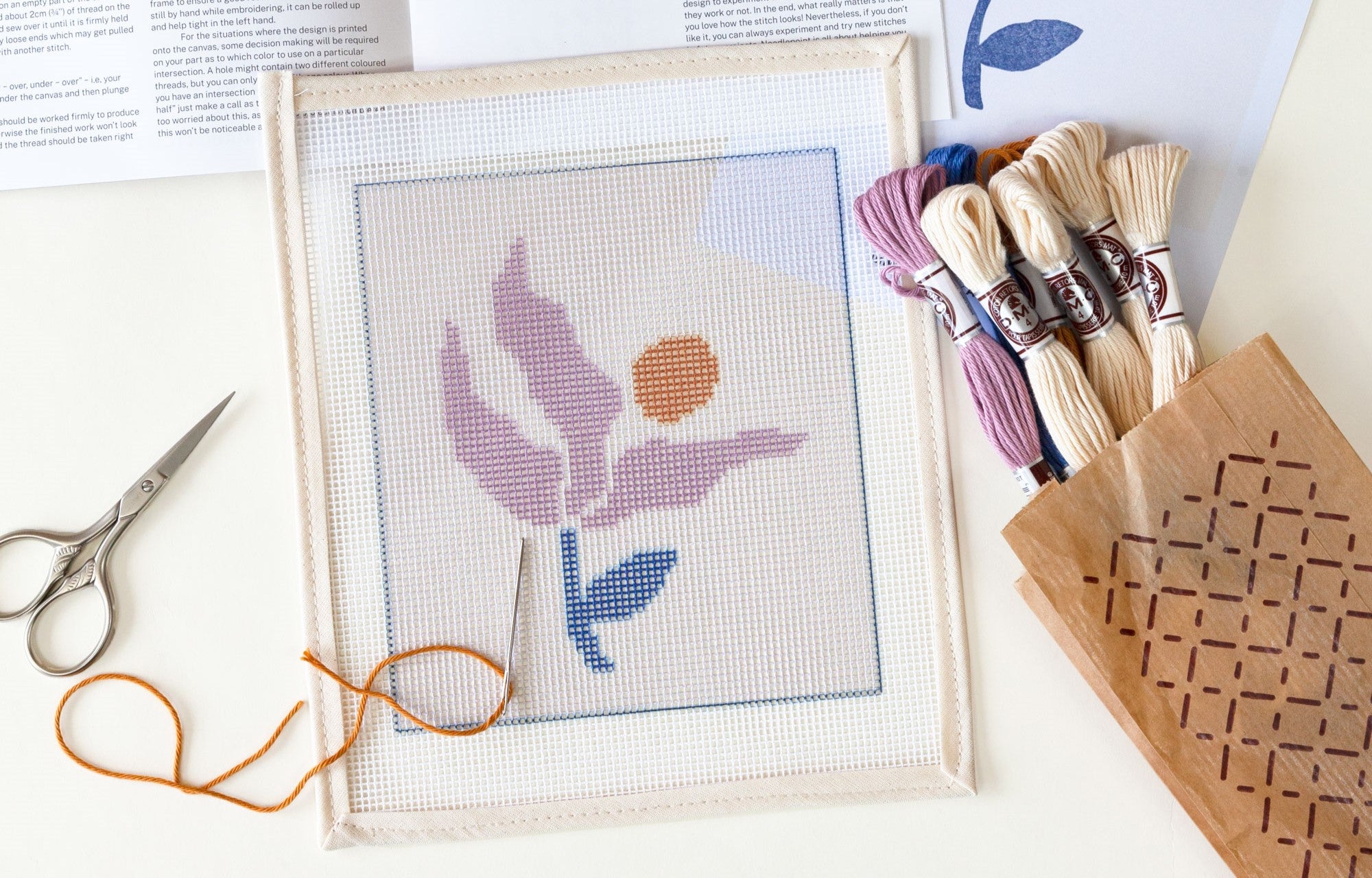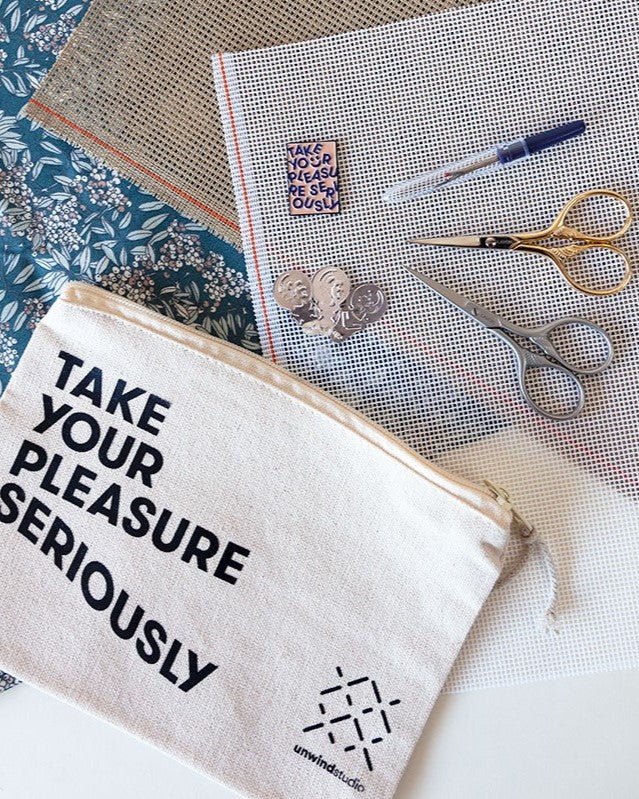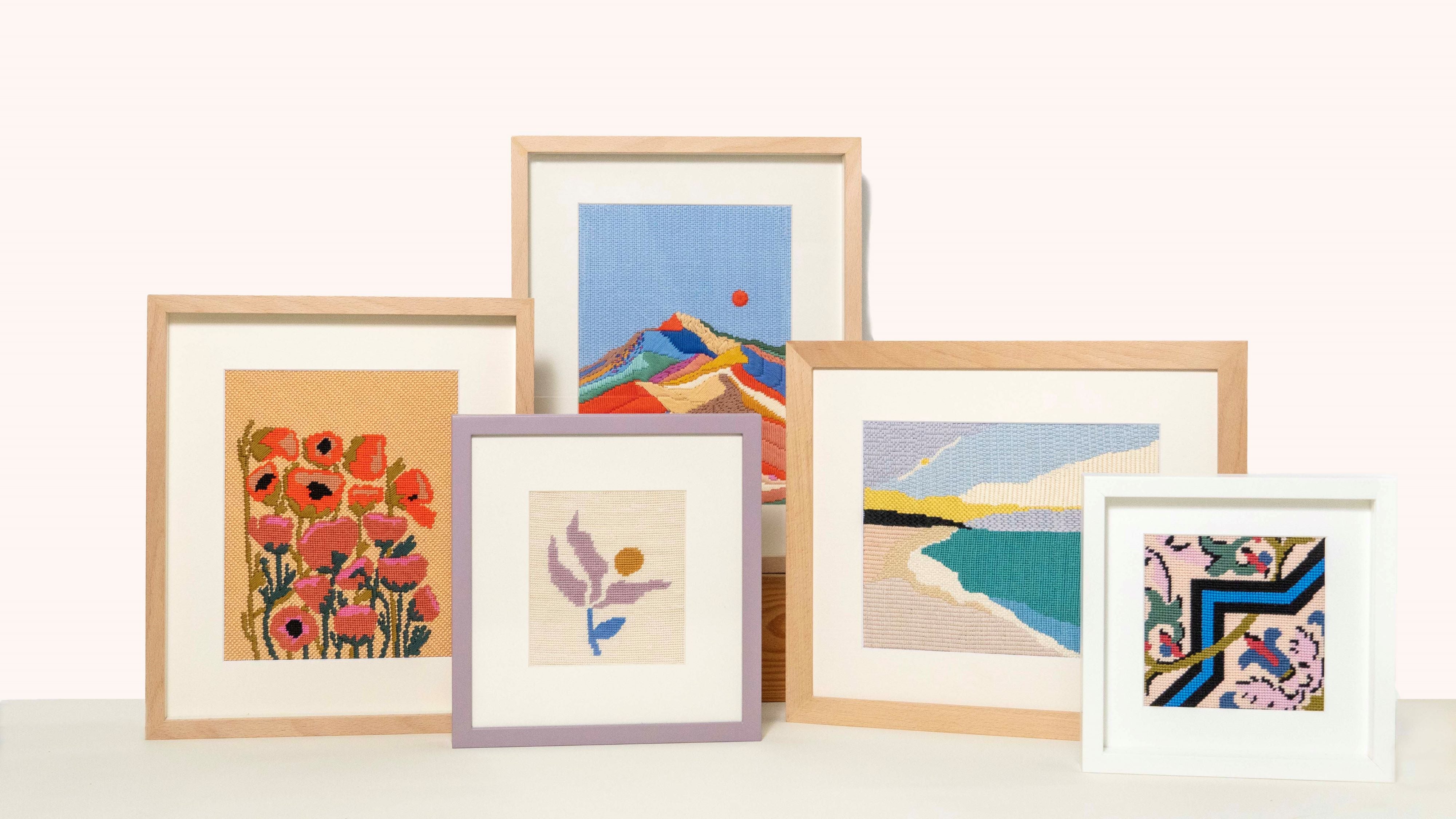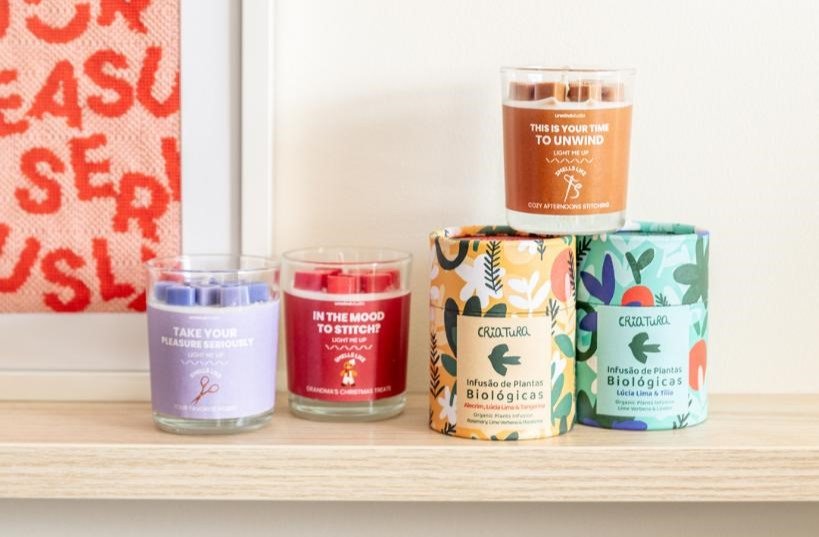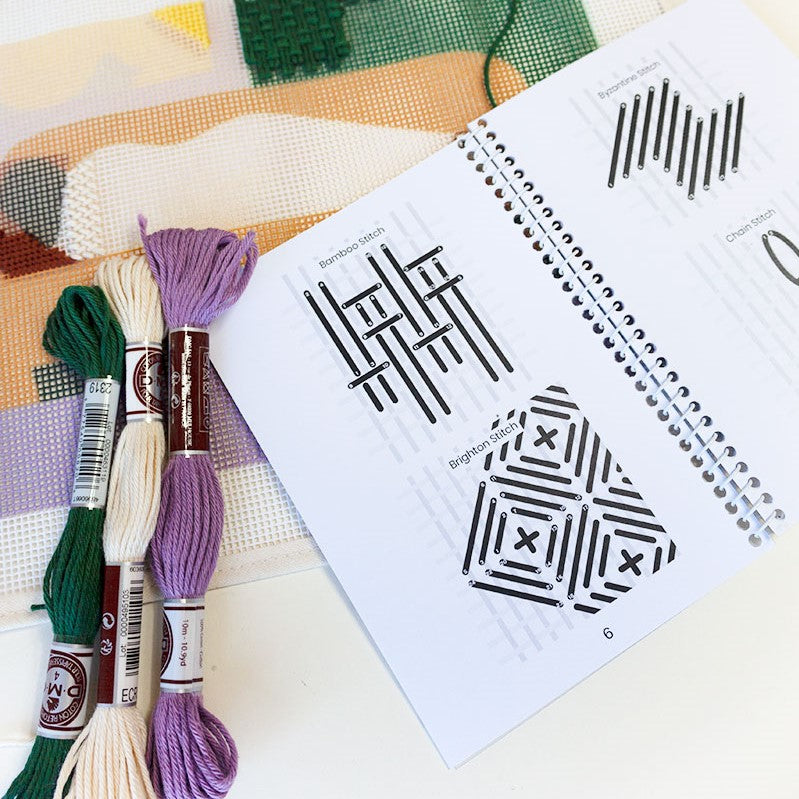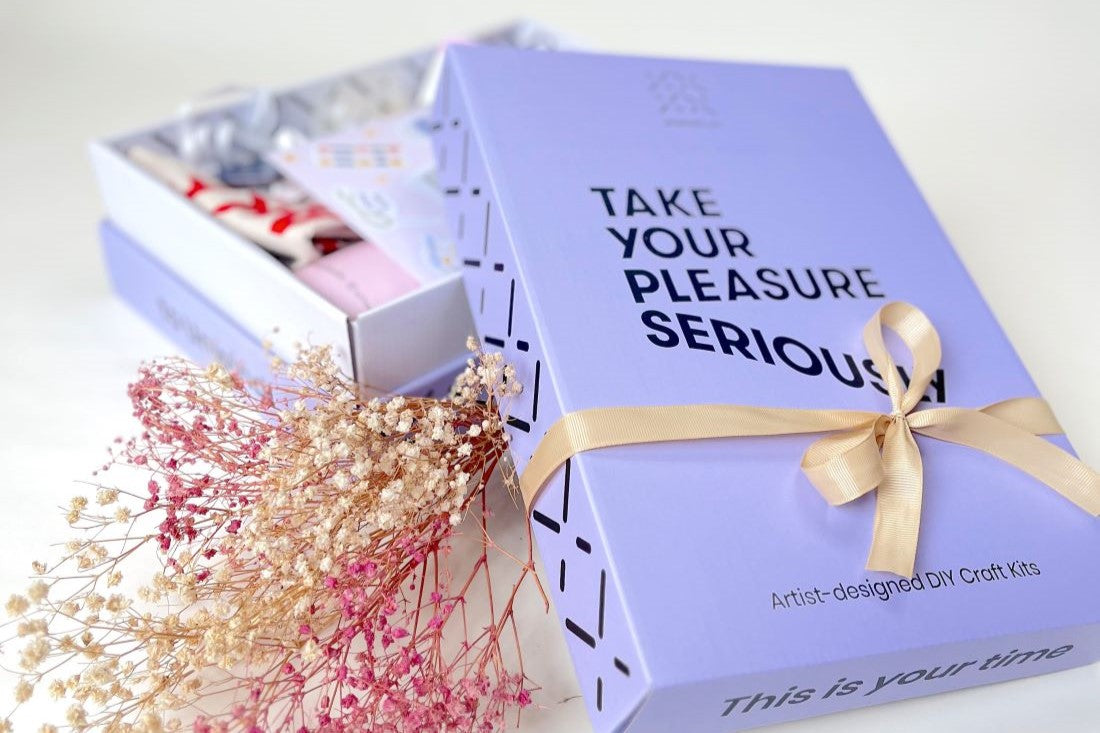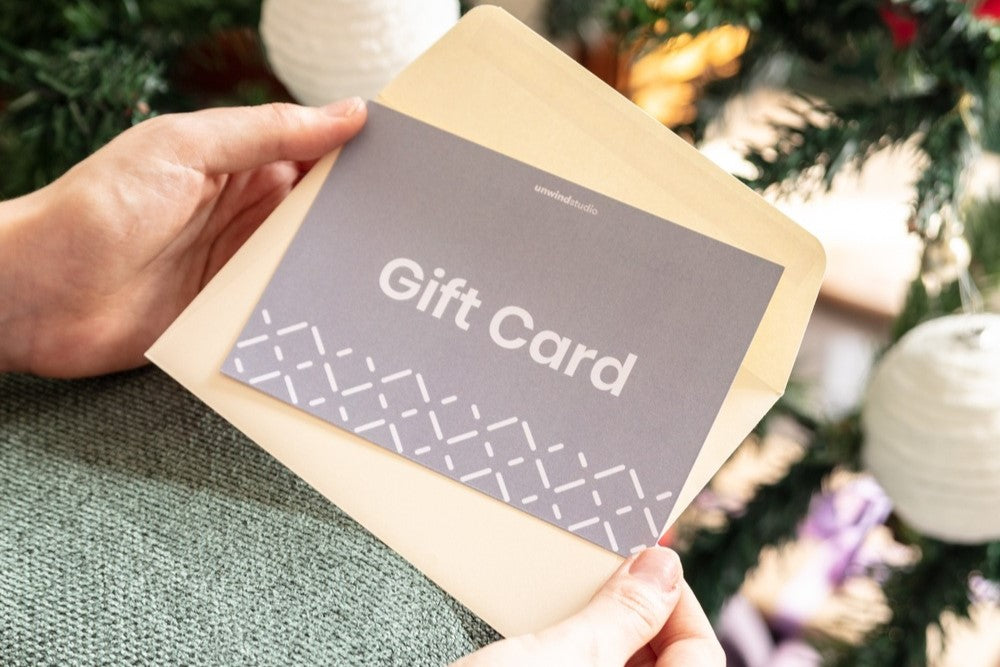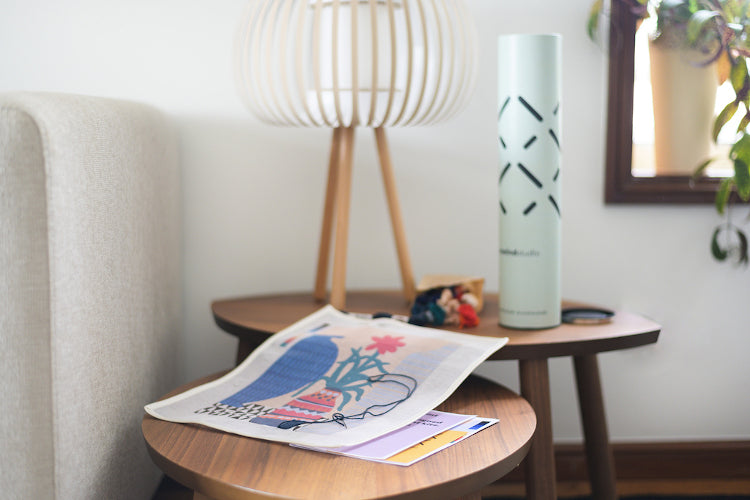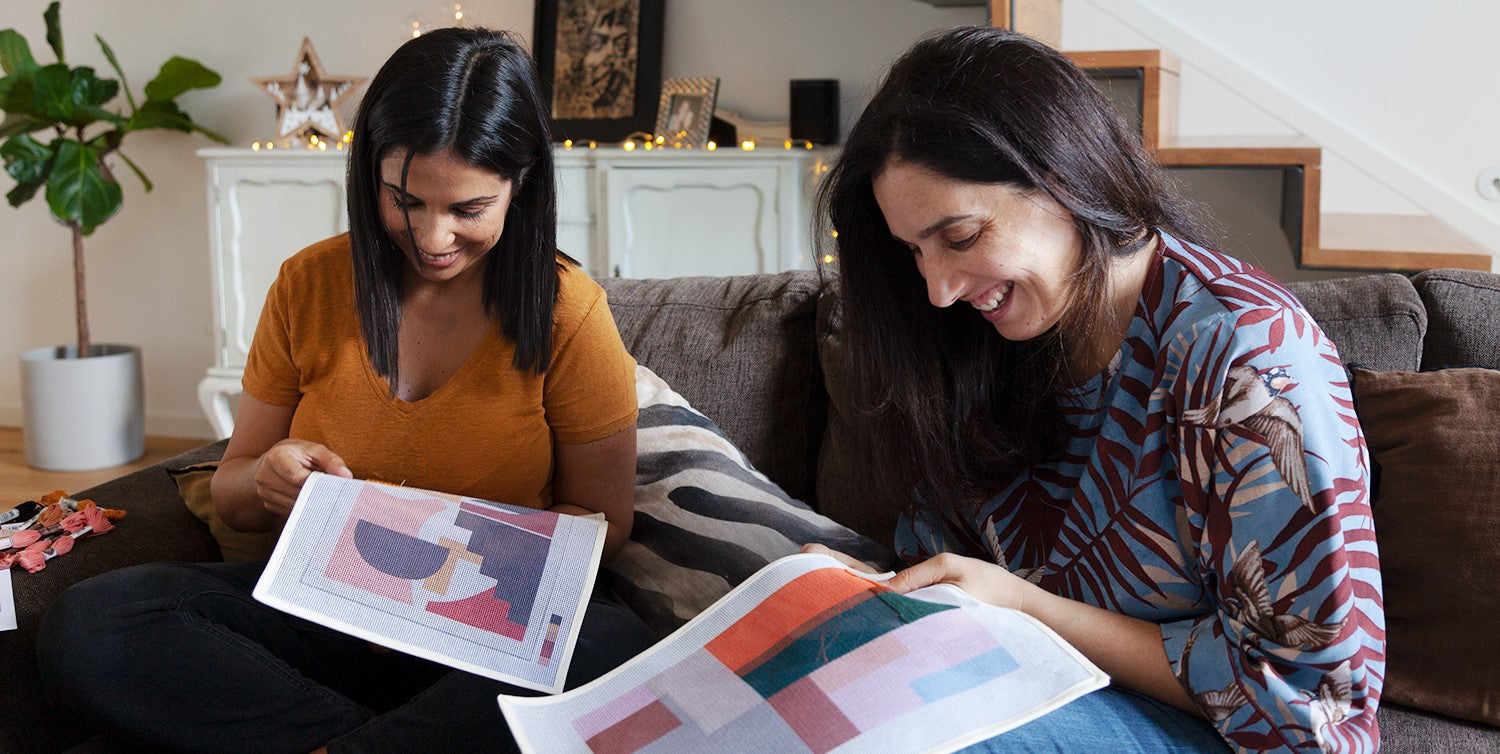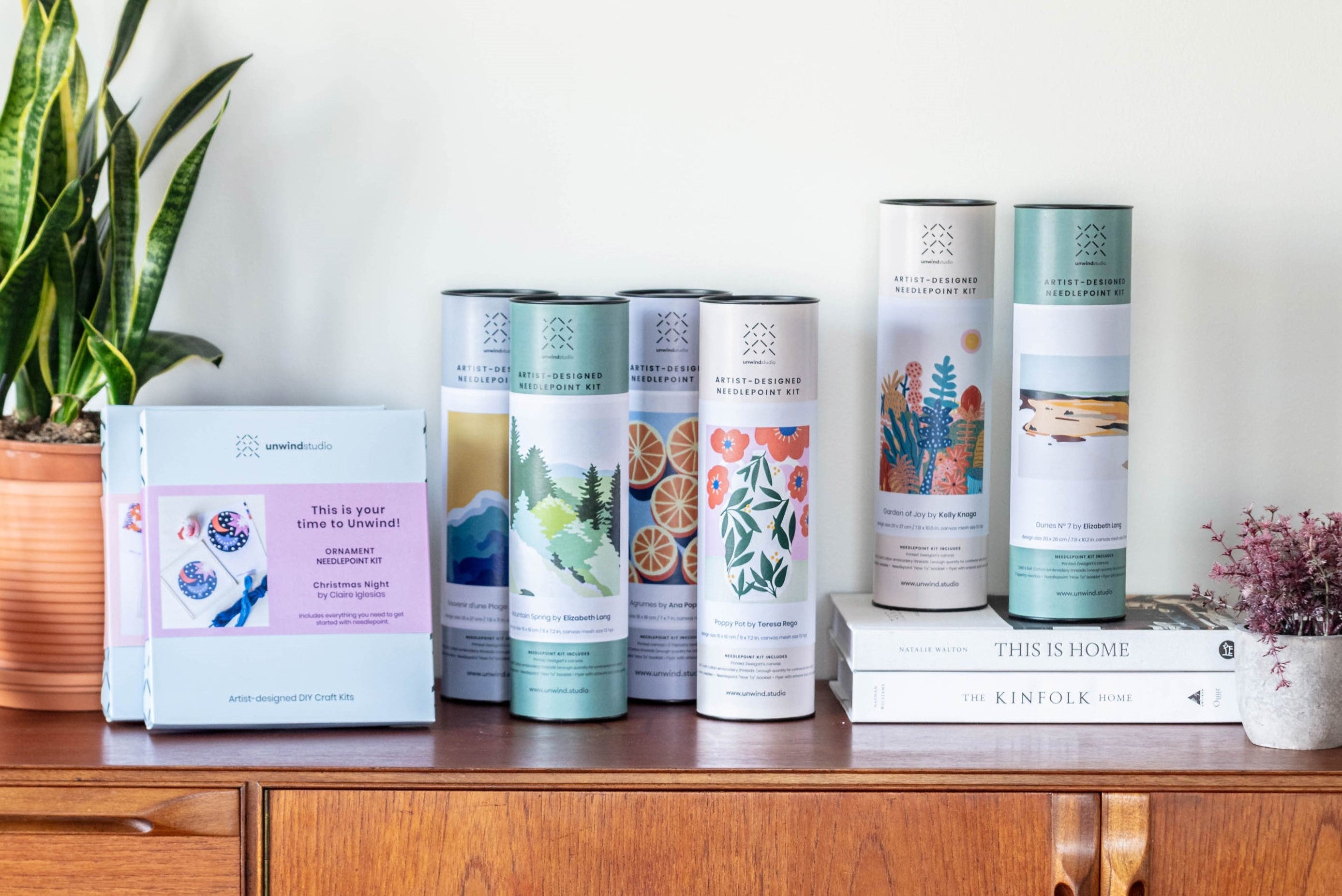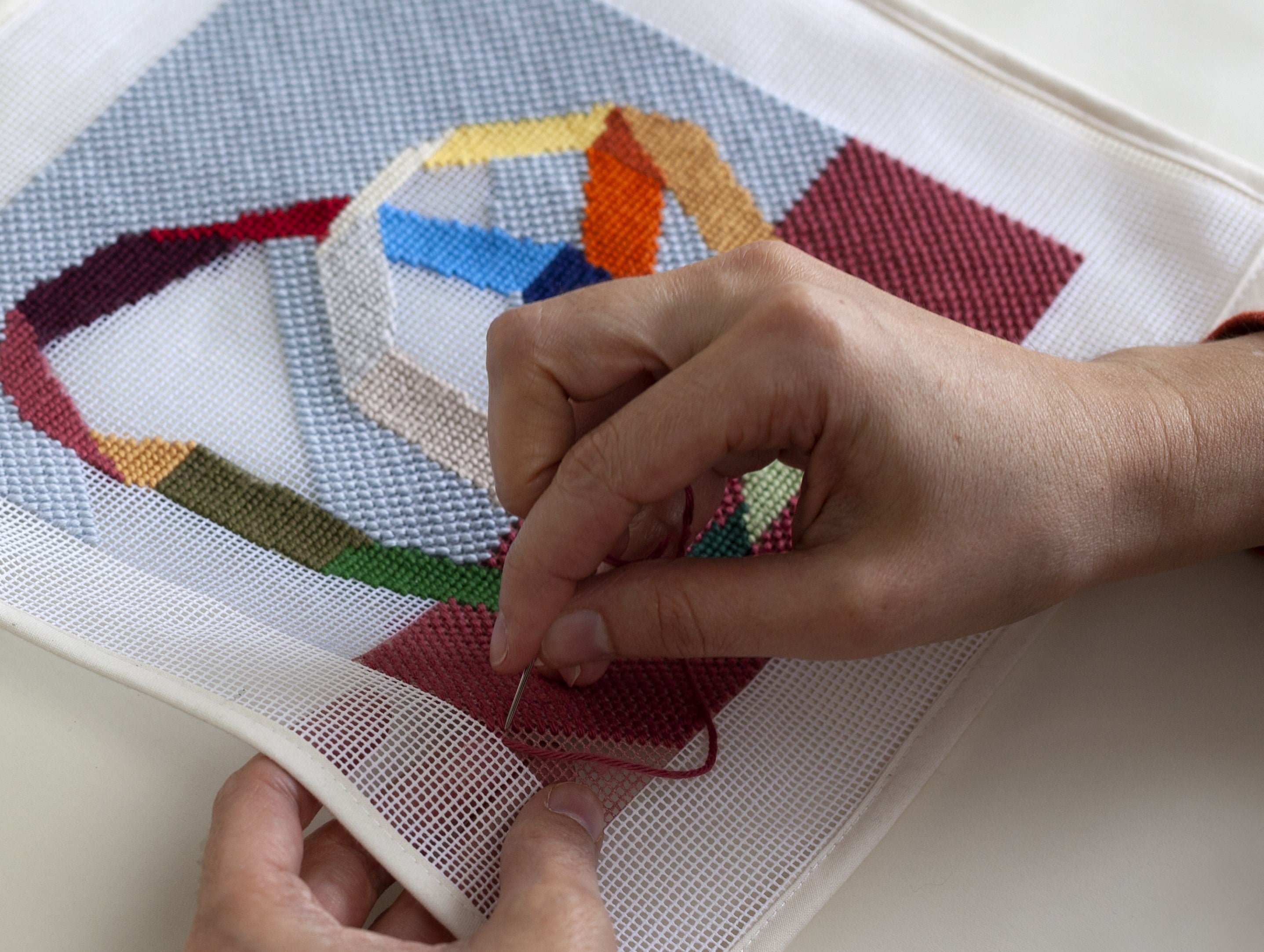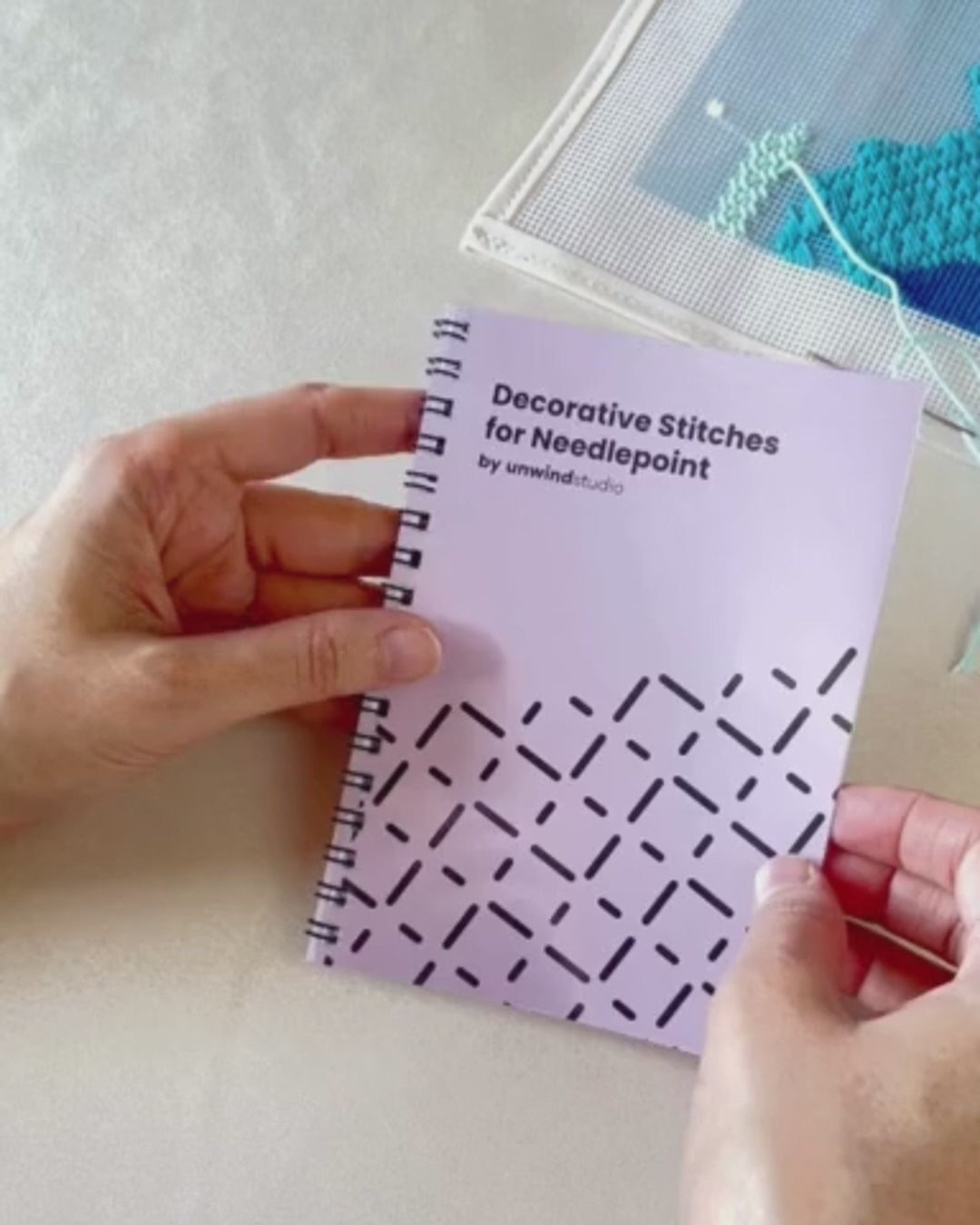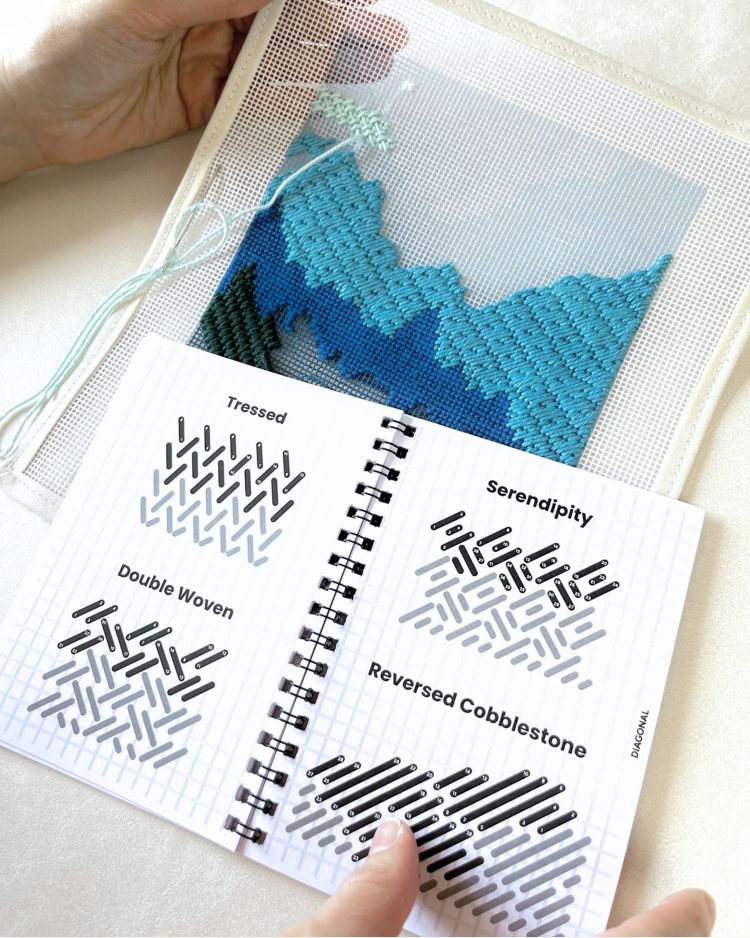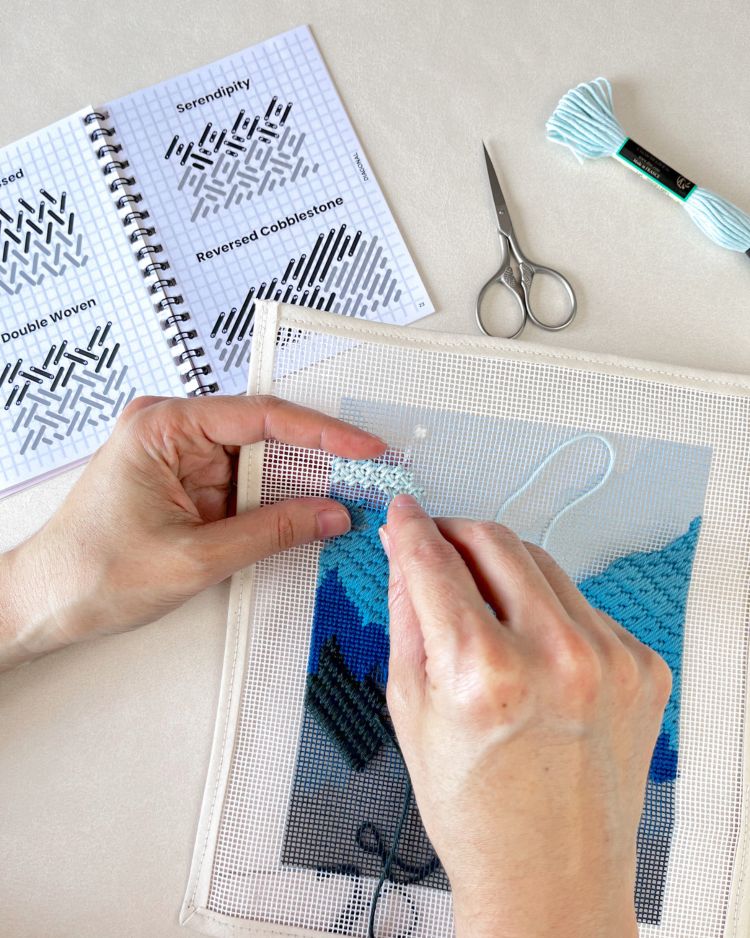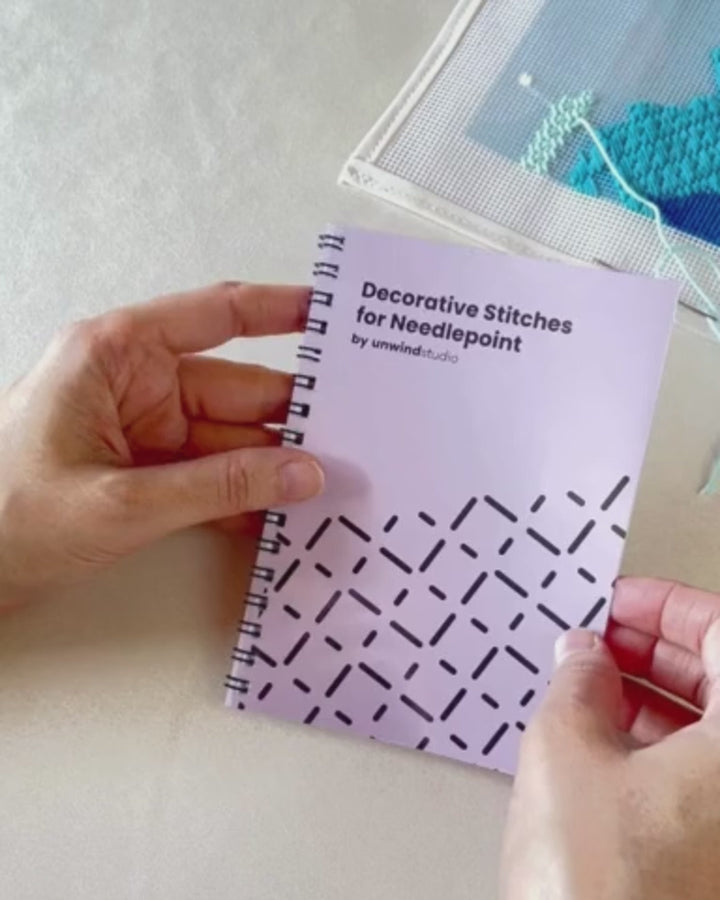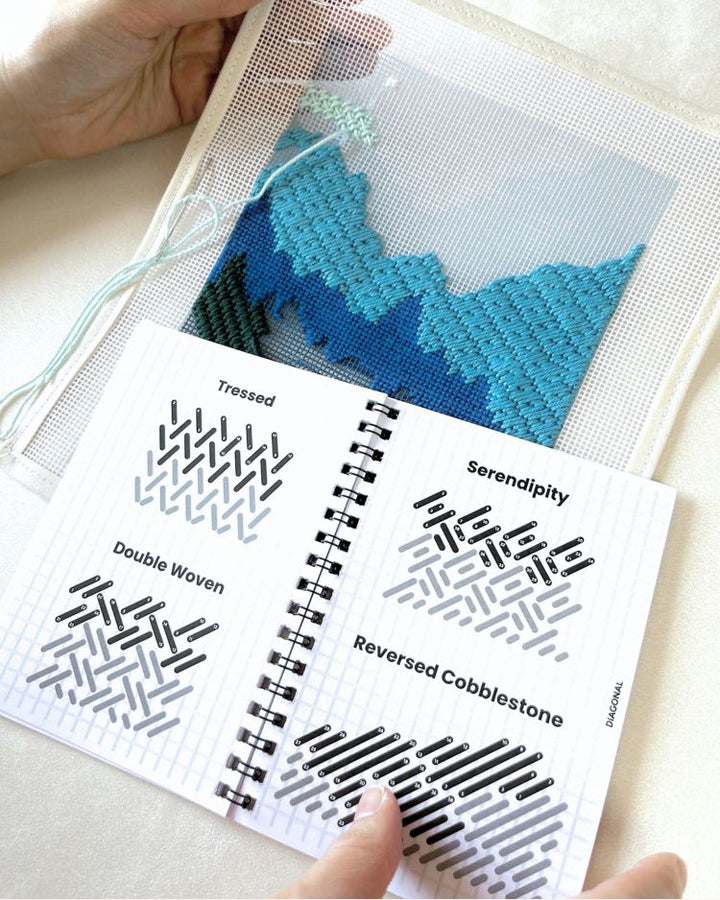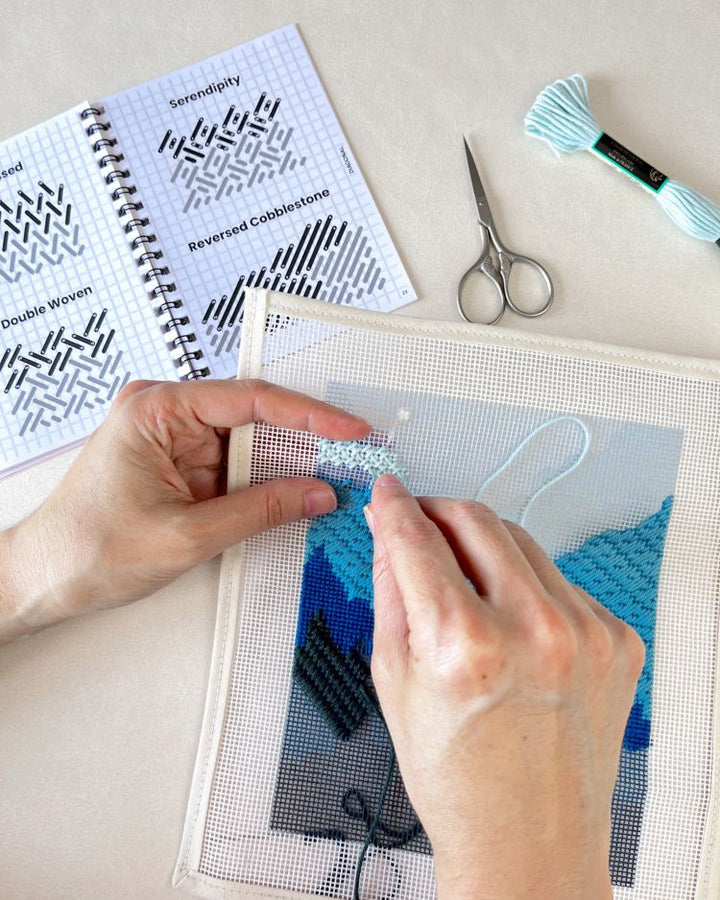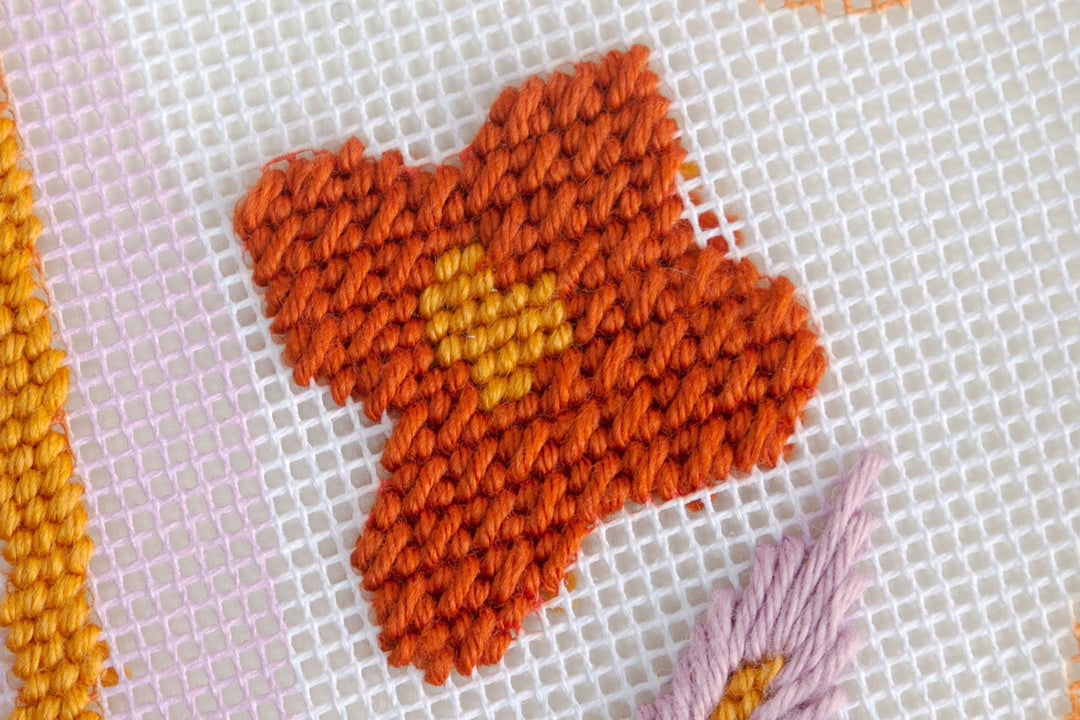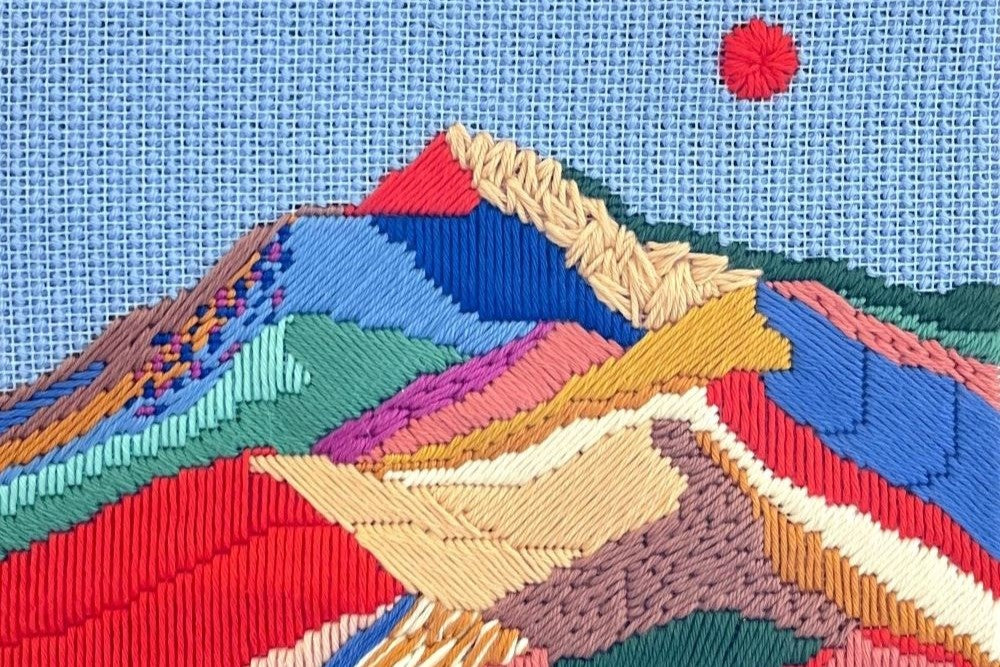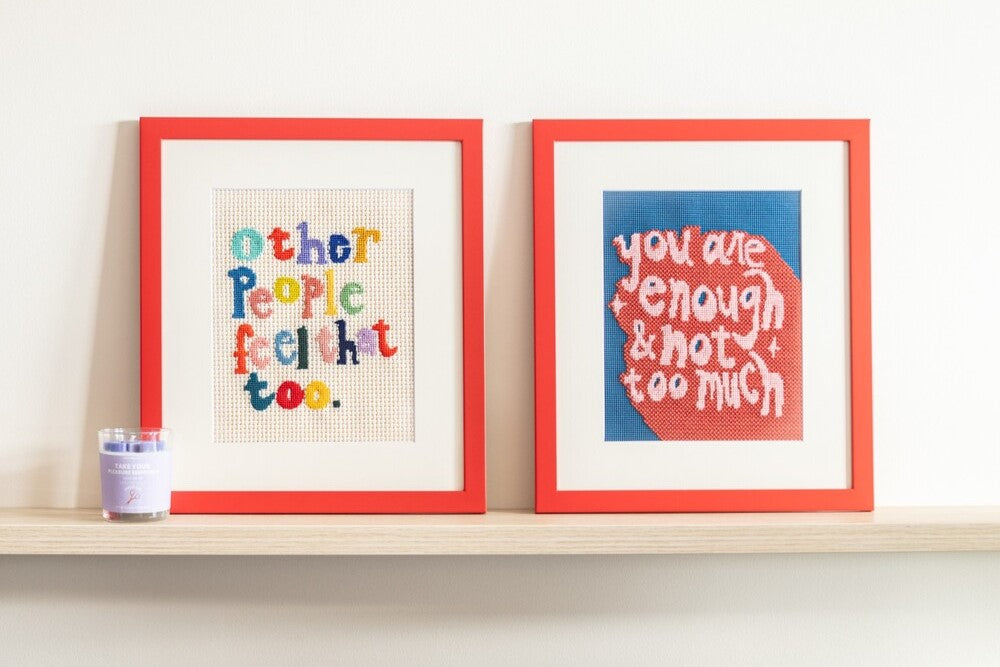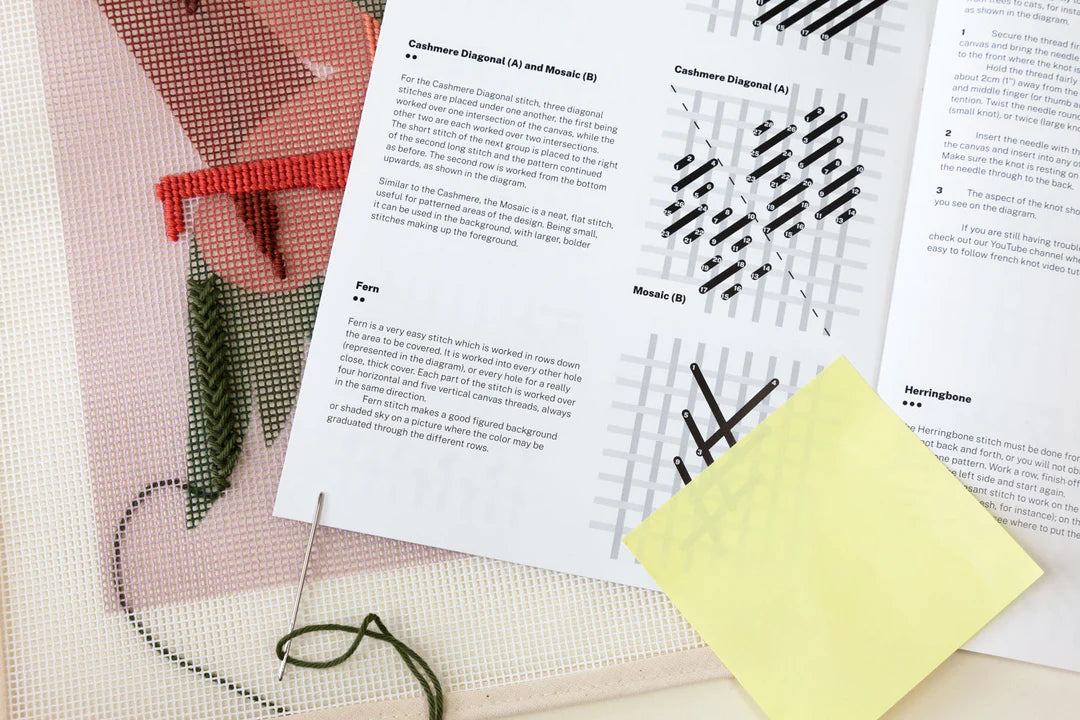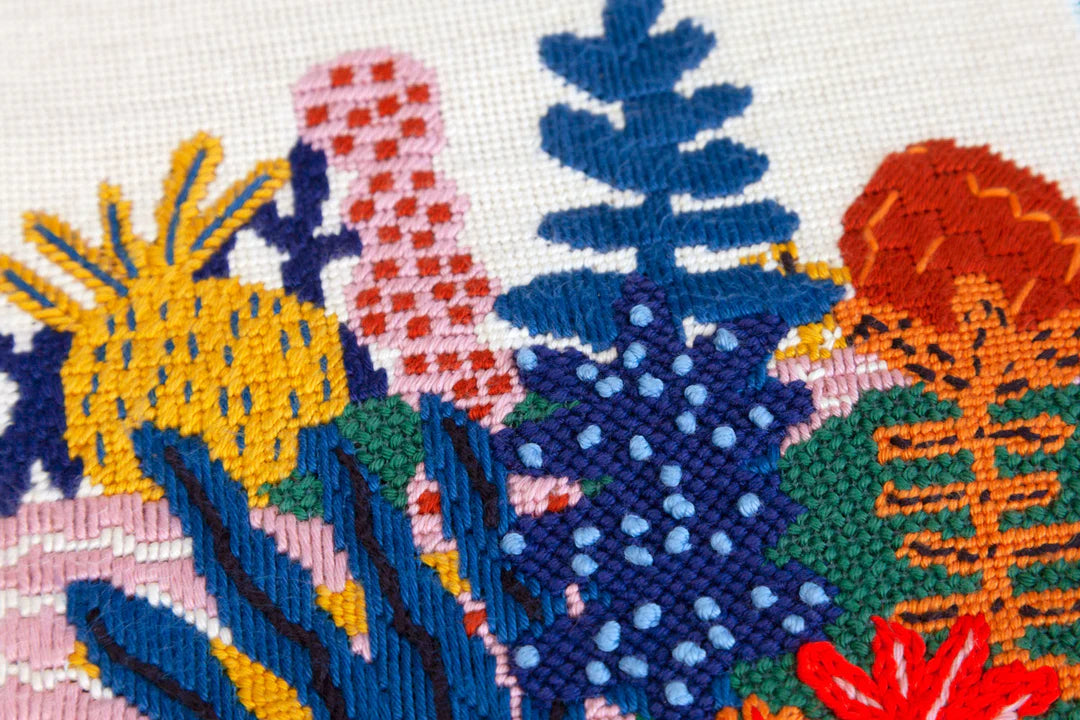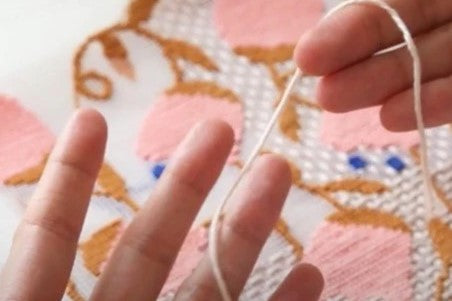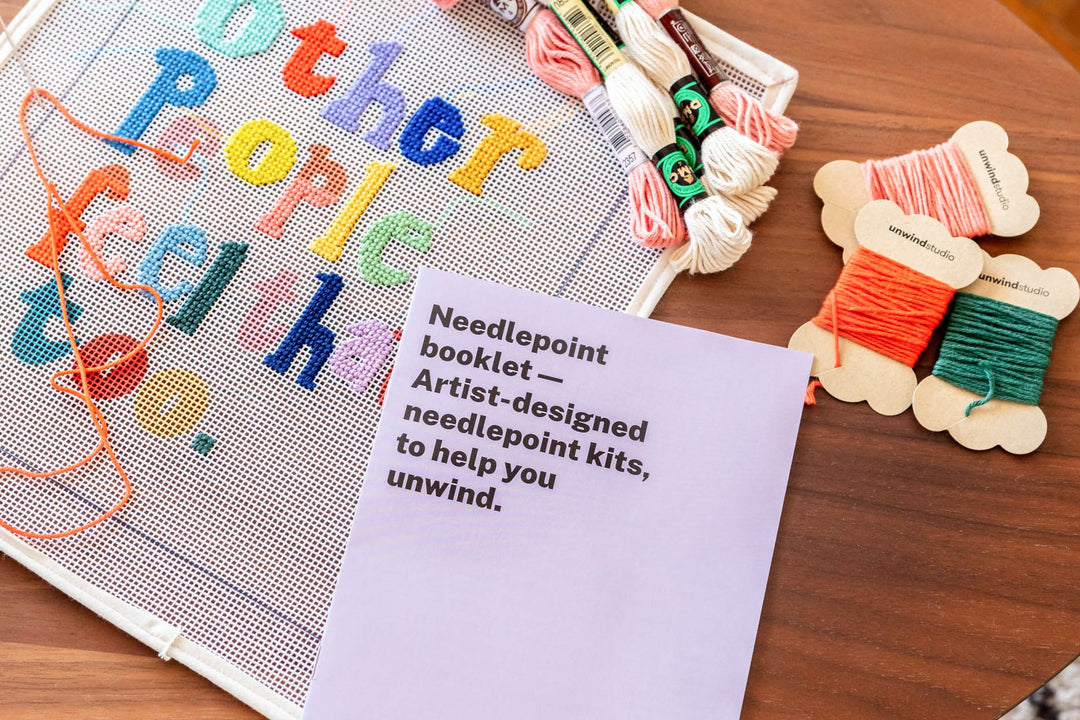For many stitchers, choosing the right needlepoint stitch for their background can be an intimidating decision. However, finding the best background stitch is easier than you may think.
In our Stitch Library, you can apply this filter to find all the stitches we recommend for background areas.
Below we will also describe in more detail the most common stitches used in needlepoint backgrounds, and they are organized by the time they take to finish a project:
- Slow to work:
- Basketweave
- Quick to work:
- Straight stitch: Brick
- Diagonal stitches: Nobuko, Mosaic, Scotch, Corduroy, Oatmeal,
Wicker, Bamboo
- Quickest stitches (openwork stitches):
- T-Stitch, Skipped Tent & Woven Pattern
Basketweave Stitch
The Basketweave stitch is a needlepoint stitch you’ll want to use again and again. It’s recognizable by the diagonal pattern it forms on the front of a canvas and the woven pattern it forms on the backside.
The Basketweave stitch is an excellent choice if you need to neatly cover large background areas, as this stitch causes no distortion to the work and makes the piece very durable.
Read all about this popular needlepoint stitch in our blog post Tent Stitch and its variations every stitcher should know!
Learn how to do the basketweave stitch in the video tutorial below:
One of the main disadvantages of the Basketweave Stitch or Tent Stitch, is that is very slow when compared to decorative stitches. Below are the best alternatives to basketweave stitch to use in background areas, that are a breeze to stitch and will help you finish your project in any time soon!
Nobuko Stitch
The Nobuko stitch is a filling stitch that forms a solid line of stitches for your background. This stitch is made from an alternating series of long and short stitches in horizontal rows for a rich, textured design. The Nobuko stitch is particularly great for nature backgrounds like water or even snow. This is the perfect needlepoint stitch for sky.
Here’s the diagram of the needlepoint Nobuko stitch alongside an example of this stitch used on our Agrumes Needlepoint Kit, followed by a video tutorial on how to do it:

Brick Stitch
If you’re searching for a beginner-friendly background stitch that still impresses, try the Brick stitch. This is one of the most popular needlepoint stitches because it’s easy to do, versatile, and adds dynamic texture to a design. The brick stitch can be done either vertically or horizontally.
Here’s the diagram of the Needlepoint Horizontal Brick Stitch alongside an example of this stitch used on our Mountain Spring Needlepoint Kit:

Scotch Stitch
Decorative and dynamic, the Scotch stitch offers a lot of dimension as a background stitch for needlepoint. With minimal effort, the Scotch stitch can cover a background with elegant texture. A completed needlepoint Scotch stitch forms a small, clean square design that’s a good choice for backgrounds.
You can also try the Diagonal Scotch, Offset Scotch, or Divided Scotch stitch variations if you’re looking to add extra depth and movement to a background.

Check out our Stitch Guides for inspiration on how to use the diagonal scotch stitch: Smokies, Breath, and Crocodile!
Mosaic Stitch
The Mosaic stitch is a wonderfully decorative stitch with tons of incredibly versatile variations. The Diagonal Mosaic stitch, for example, is an easy Mosaic stitch variation that’s perfect for backgrounds. This stitch is fairly easy to use, quickly covers large areas of the canvas, and creates a neat and full background.
Here’s the diagram of the needlepoint Mosaic Stitch:

Check out our Stitch Guides for inspiration on how to use the mosaic stitch: Breath, Crocodile, Garden of Joy, Pink Ice Protea & Bellflower!
Corduroy Stitch
The Corduroy stitch creates a similar texture to corduroy. It is characterized by a ribbed appearance and a quilted texture that makes it ideal for backgrounds that will also have their own character! Here’s the diagram of the needlepoint Corduroy Stitch an example using this stitch as the background needlepoint stitch:

Floral Study 1 Needlepoint Kit
Check out our Stitch Guides for inspiration on how to use the Corduroy Stitch: Floral Study 1, Formations, The Marsh, Skyroom, Origami Heart.
Oatmeal Stitch
The Oatmeal stitch is a fantastic option for needlepoint backgrounds, offering a soft, slightly raised texture. This stitch creates a beautiful, quilted effect, making it ideal for backgrounds that need a bit of dimension without overwhelming the foreground elements of your design. Due to its structured but subtle look, the Oatmeal needlepoint stitch is a great alternative if you're looking to add interest while maintaining a smooth, even background.
Here’s the diagram of the needlepoint Oatmeal Stitch alongside an example of this stitch used in our designs:

Zoe, the Zebra Needlepoint Kit
Check out our Stitch Guide for inspiration on how to use the Oatmeal Stitch: Zoe, the Zebra!
Wicker Stitch
The Wicker stitch is a decorative background stitch that offers a woven appearance, mimicking the texture of traditional wicker baskets. This stitch creates a subtle but effective textured effect that pairs well with both modern and classic designs. The Wicker stitch is perfect for backgrounds that require a bit of variation while still maintaining a uniform appearance.
This stitch is also relatively quick to work compared to traditional Basketweave, making it a great time-saving choice for large background areas.
Here’s the diagram of the needlepoint Wicker Stitch alongside an example of this stitch used in our designs:

From the Other Side Rainbow Needlepoint Kit
Check out our Stitch Guides for inspiration on how to use the Wicker Stitch: From the Other Side Rainbow, Untitled Abstract, Le Temps est Bon, Dot Pot!
Bamboo Stitch
For a stitch that adds organic texture and movement to a needlepoint background, consider the Bamboo stitch. This stitch mimics the natural look of bamboo stalks with alternating long and short stitches, creating a structured but visually engaging effect. The Bamboo stitch is particularly great for botanical or nature-inspired designs, as well as modern abstract pieces where a unique background stitch can elevate the overall look.
Additionally, the Bamboo stitch works up quickly, making it a great option for those looking to speed up their stitching while maintaining an elegant and decorative effect.
Here’s the diagram of the needlepoint Bamboo Stitch alongside an example of this stitch used in our designs:

Check out our Stitch Guides for inspiration on how to use the Bamboo Stitch: Untitled Abstract, The Building of a Thousand Flowers!
Openwork Background Stitches for a quick filling
Openwork stitches, as the name refers, are stitches that don't completely fill the needlepoint canvas. They are perfect for a situation where a light stitch is preferable for the background, to enable other details of the design to pop. Using these openwork stitches in combination with other stitches creates interest in the canvas and adds texture to your needlework!
T Stitch & Skipped Tent
The T stitch is a classic needlepoint stitch that makes backgrounds a breeze. Named for its “t” shape, this open background stitch produces a simple, yet textured look that allows other details to shine through.
The Skipped Tent it's also called as Basketweave Twill, because it's worked like the basketweave stitch, but skipping every other row. For the best result, the stitch needs to be worked on the diagonal, so that the skipped holes have thread passing by in the back of the canvas, creating a more pleasant-looking result.
T Stitch & Skipped Tent Diagrams
Here's the diagram of this needlepoint stitch, alongside an example of its use in our needlepoint canvases:
Woven Pattern Stitch
Similar to the brick stitch, beginner stitchers will appreciate the ease of the Woven Pattern stitch. This background stitch has a very tidy appearance and allows any stitcher to fill in large areas of a canvas with little effort. The woven pattern stitch fully covers a canvas and is fantastic for neutral background designs.
Here's the diagram of this needlepoint stitch, alongside some examples of its use in our needlepoint canvases:

Building Thousand Flowers Stitch Guide
Woven Pattern Stitch Background

Conclusion
A background stitch is crucial to filling in your project in a tidy and consistent way. With these tips, you’ll be able to discover the best background stitches for any needlepoint project. For even more inspiration for background stitches, check out our blog post on selecting needlepoint stitches and our favorite needlepoint decorative stitches.


